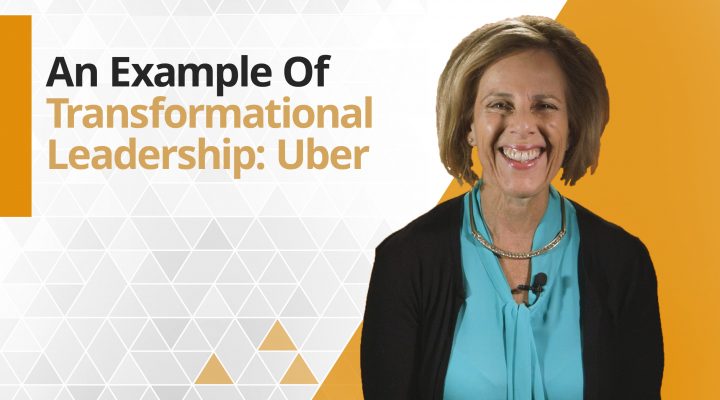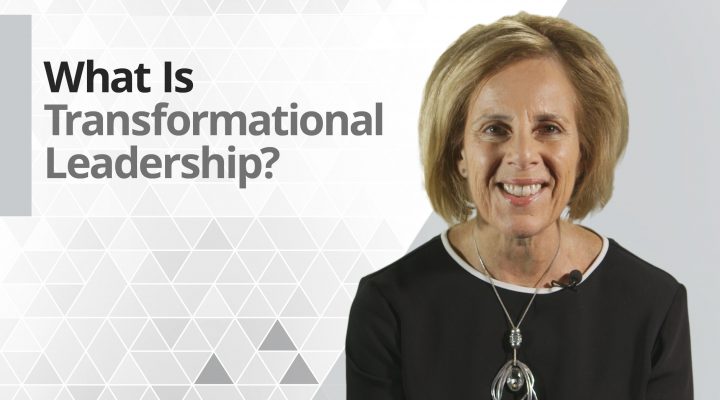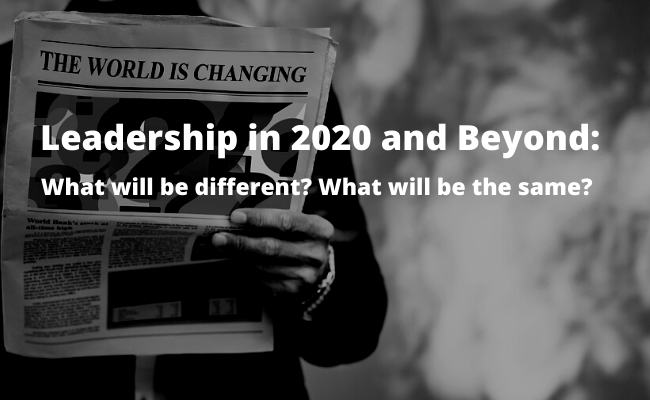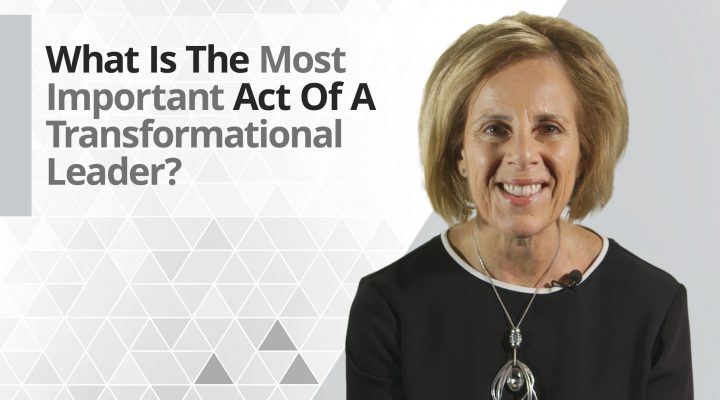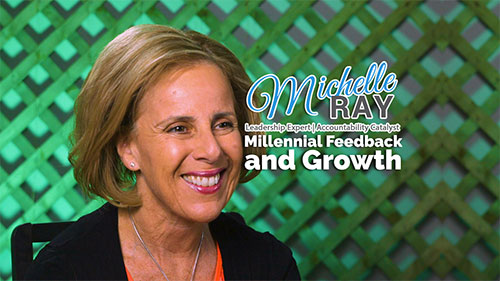Why is it that so many change management initiatives fail? In order to achieve buy-in, the first step involves understanding the impact of change. Individual perceptions regarding change are based on experiences; both personal and professional. As Newton’s law states: A body at rest stays at rest. A body in motion keeps moving. Change is a choice. The adage: Nothing changes if nothing changes is highly relevant for today’s leaders. When a person discovers his or her “pain point” then he or she is ready to move forward. The same principles apply for organizations. Change is a visceral, emotional experience. [Read more…] about Is Change Management Really That Hard?
Leadership
An example of Transformational Leadership: Uber
An example of Transformational Leadership that continues to make headlines is known to millions of travelers. Travis Kalanick and Garrett Camp are renowned as the founders of Uber. Their respective journeys as technology mavericks have been both lauded and criticized, depending on one’s vantage point. Uber has revolutionized the manner in which we “tap the app” in order to get from Point A to Point B. According to “folklore”, both were attending a technology conference in Paris in 2008 and on a particular snowy night, conceptualized Uber when they couldn’t catch a taxi. The company’s primary competitors in the taxi and chauffeured transportation sectors have been in “reactive” mode ever since Uber burst on the scene a decade ago.
What makes Uber’s founders such a fascinating study? Kalanick and Camp not only identified a consumer need…They successfully anticipated the future by responding to this need in an unprecedented manner. In a nutshell: Uber has transformed an entire market segment: Ground transportation. Kalanick and Camp are transformational leaders who predicted the future by parlaying their vision into a global phenomenon.
Today’s consumers are attracted to companies that offer immediacy, ease of use and tangible cost benefits when it comes to solving their problems. Transformational leaders are always ahead of the curve. They possess a unique understanding of real-world challenges and an extraordinary capacity to create new realities. Travis Kalanick and Garrett Camp exemplify transformational leadership. They’ve changed the way that we go about getting transportation all over the world by making it easier and instantly accessible. What did we do in a world without Uber?
Anticipating the future as a transformational leader is not only about seeing the future and not only responding to change. Leaders who are transformational also possess the ability to predict the future before it even happens. It requires a relentless focus on creating and managing outstanding customer experiences. Uber has successfully gone above and beyond traditional marketing avenues to have brand ambassadors sharing these experiences in their communities, both on and off-line, locally and globally.
If you wish to see yourself as an example of transformational leadership, hone your ability to anticipate, act and trust in your vision. These are some of the most important characteristics of leaders who are cognizant of the need to think forward in times of constant change.
This article is a partial transcript of a video on YouTube.
Michelle Ray (Twitter) is one of the best international leadership keynote speakers in Vancouver. She helps you discover your potential through presentations, coaching and consulting. With over 20 years of experience Michelle has worked with hundreds of companies around the world. She is taking bookings for speaking engagements and can be contacted at MichelleRay.com
What is Transformational Leadership?
Imagine the possibilities for yourself and your business if every leader within your organization embodied the characteristics of a transformational leader. In order to achieve, or get close to realizing his or her leadership potential, it is important to understand the meaning of transformational leadership, why it matters and where the gaps exist.
How to be a better manager
Do you possess the essential skills to lead and manage your organization into the future? In order to be a better manager, it is important to prioritize your day-to-day, transactional responsibilities while recognizing that the transformational, visionary aspects of leadership are also key competencies. By taking a strategic approach, you can organize your management tasks and leadership goals simultaneously. Effective managers are also efficient. They are able to delegate, empower others and free themselves up to focus on the “big picture” responsibilities. You can positively impact your team, as well as your organization as a whole, by honing your leadership and management skills. At the same time, your success will depend on your capacity to remain open to learning, improving and growing in your role.
How can we be better managers and practice transformational leadership simultaneously? First, it is important to recognize that while there is the difference between managing and leading, today’s leaders need to be skilled at both. As a manager, your team has certain expectations regarding their relationship with you. The single, most important aspect of effective management is making yourself available for your team, regardless of whether they work remotely or in the same physical location. This necessitates time management on your part. Are you accessible in person, by phone…or whatever means necessary to connect in a meaningful manner. Planning and organizing your schedule to regularly make time for a conversation is not a simply a task to check off on your to do list. It is a leadership priority for every manager at all levels.
Successful leaders are cognizant of their responsibilities and are mindful of organizing their priorities. While it remains true that accomplishing the routine aspects of work is important, managers cannot lose sight of the need to get the right things done. And the right things pertain to prioritizing people as well as projects. When you find yourself getting caught up in the minutiae, realize that you are putting your ability to perform at the optimal level at risk. Having numerous balls in the air may come with the territory. However, the constant “juggling” will impact your effectiveness each time you choose to comprise key people priorities for less important tasks.
This article is a partial transcript of a video on YouTube.
Michelle Ray (Twitter) is one of the best international leadership keynote speakers in Vancouver. She helps you discover your potential through presentations, coaching and consulting. With over 20 years of experience Michelle has worked with hundreds of companies around the world. She is taking bookings for speaking engagements and can be contacted at MichelleRay.com
Leadership in 2020 and Beyond: What will be different? What will be the same?

What are the core issues facing leadership in 2020 and beyond? Walk into any meeting comprising of senior leaders and the hottest topic of conversation will likely revolve around change, technology, clients and talent. While it is no surprise that these top-of-mind challenges are keeping many leaders up at night, the unrelenting need to constantly recalibrate is the most interesting aspect of doing business today and into the future. What will be different? And what, if anything, will be the same? [Read more…] about Leadership in 2020 and Beyond: What will be different? What will be the same?
Realize the leverage of modeling authenticity and integrity
Authenticity and integrity are essential character traits that leaders need to develop in order to build trusting relationships with their teams. Research confirms the direct correlation between leaders who demonstrate these traits and employees’ levels of trust, engagement and buy-in. For some leaders, their greatest challenge is determining the level of disclosure and transparency whether sharing large scale company news or admitting a mistake. Put simply, how and when to practice humility. Your capacity to be honest will be refreshing and attractive from your team’s perspective. When a leader displays authenticity, employees are more likely to follow and feel equally comfortable to share their own vulnerabilities. Even more significant is the positive impact of authentic leadership on your organization’s culture and employee brand.
HOT OFF THE PRESS:
WATCH MICHELLE’S BRAND NEW “IT STARTS WITH YOU” SPEAKER DEMO VIDEO BY CLICKING HERE!
CONTACT MICHELLE TO CHECK HER AVAILABILITY FOR KICKING OFF YOUR 2020 EVENTS!
This article is a partial transcript of a video on YouTube.
Michelle Ray (Twitter) is one of the best international leadership keynote speakers in Vancouver. She helps you discover your potential through presentations, coaching and consulting. With over 20 years of experience Michelle has worked with hundreds of companies around the world. She is taking bookings for speaking engagements and can be contacted at MichelleRay.com
Why is transformational leadership so important today?
The pace of technological change necessitates a fluid, flexible approach, a shift in thinking and a willingness on the part of leaders to be ready for on-going transformation of their organizations. In order to meet the challenge, leaders need to be prepared to undertake an honest appraisal of their individual style by asking themselves whether they are effectively setting the vision for future success. The expectations of your workforce, as well as your customers continue to evolve. Therefore, it is a leader’s responsibility to challenge the status quo, take the lead and inspire their employees to transcend self-imposed boundaries, both personal and organizational, in order to adapt and embrace new realities. The transformational leader is able to raise the bar for all by employing a charismatic, daring an open style.
HOT OFF THE PRESS:
WATCH MICHELLE’S BRAND NEW “IT STARTS WITH YOU” SPEAKER DEMO VIDEO BY CLICKING HERE!
CONTACT MICHELLE TO CHECK HER AVAILABILITY FOR KICKING OFF YOUR 2020 EVENTS!
This article is a partial transcript of a video on YouTube.
Michelle Ray (Twitter) is one of the best international leadership keynote speakers in Vancouver. She helps you discover your potential through presentations, coaching and consulting. With over 20 years of experience Michelle has worked with hundreds of companies around the world. She is taking bookings for speaking engagements and can be contacted at MichelleRay.com
What is the most important act of a transformational leader?
What is the most important act of a transformational leader? Without question it is the leader who can communicate vision with a forward-thinking mindset.
My first professional experience with a transformational leader began when I accepted a very challenging position to lead a small advertising sales team in a down economy. Although I had worked in the industry for over ten years, my experience did not prepare me for the challenge of inspiring my team during a severe recessionary environment. Being the person who is ultimately responsible for achieving results, I was acutely aware of the pressures associated with my role. In addition to managing and dividing sales territories amongst the team, establishing targets and budgets, reporting regularly to senior management, my greatest challenge was not only about reaching sales goals. The true test of my leadership acumen came in the form of managing a diverse team of high achievers, including my predecessor who was “demoted” to make room for me.
Fortunately, my manager possessed an extraordinary strength of character, and a raw openness in a leadership role that I admired greatly. Above all else, he not only understood my vulnerabilities and fears, he was able to create an environment of high trust. I was able to discuss my own challenges regarding the individual and collective performance of my team with ease. And it was in this role that I learned the difference between transactional and transformational leadership. A transactional leader has a preference for staying in the status quo, going about his or her day-to-day responsibilities while giving minimal consideration to the purpose of it all. The relational aspect of individual and team performance is secondary to results. A transformational leader is the opposite. My manager exemplified the qualities of a transformational leader: Specifically, he led with vision and an uncompromising dedication to the success of his team. He demonstrated a genuine belief me, communicated on a daily basis while remaining acutely interested and invested in the outcomes of every sales encounter.
When I reflect on this example, it also serves to remind me that a transformational leader has the ability to create an internal passion within the organization that is felt by all. Leaders are in a position to profoundly impact and the atmosphere, either positively or negatively. Therefore, it is incumbent on a leader to understand the extent of his or her influence, if he or she is to have success in helping the enterprise achieve a strategic advantage in its respective marketplace/industry.
When you become THE transformational leader who can lead with vision, ignite passion and create a sought-after culture, your team will thrive and your organization will continue to flourish for future success.
This article is a transcript of a video on YouTube.
Michelle Ray (Twitter) is one of the best international leadership keynote speakers in Vancouver. She helps you discover your potential through presentations, coaching and consulting. With over 20 years of experience Michelle has worked with hundreds of companies around the world. She is taking bookings for speaking engagements and can be contacted at MichelleRay.com
Can you teach an old dog new tricks?
We’re all familiar with the adage: “Can’t teach an old job new tricks?” Well, I beg to differ for this reason: If we don’t teach those old dogs new tricks, they simply won’t survive. And if you’re one of those “old dogs”, maybe that’s you as a leader…struggling with the idea of embracing new realities; evidenced by the way that you have been leading your organization.
Like dogs, many humans find it difficult to learn something new when the context changes. In our current business landscape where disruption has become the norm, it is easy to understand why leaders struggle in a “change in context” environment. Humans are also creatures of habit. We become uncomfortable with the unfamiliar and find it difficult when the context in which we are doing business changes. The adage “repeated discomfort generates comfort” is one solution that can be applied in the face of change and uncertainty. However, if we are to accept new realities, we first need to address our mindset.
Thoughts are driven by our deeply held beliefs, which manifest as attitudes that dictate outcomes. The manner in which we interpret situations and events and subsequently make decisions is evidence of mindset in action. It takes years to form habits and may take even longer to break them. For this reason, the idea of altering perspectives may seem overwhelming. Unlike dogs, humans possess a higher level of consciousness and larger cerebral cortex with space for complex abstract reasoning. We have the capacity to shift our thinking in order to embrace and adapt to a new order of things. The difficulty lies in overcoming internal pre-programmed messaging regarding our fears and consequently, our mental roadblocks when faced with the need to do things differently.
Remember that you have invested a certain amount of time choosing to view your enterprise in a particular light. If you suspect that you are resisting the need to move forward and “learn new tricks”, it may be helpful to ask yourself: “How accurate is my perspective? “ Or “Is my fear real or imagined?” You may discover that your frame of reference regarding how you view the business landscape is no longer serving you, and it’s time to muster the courage to take the lead and welcome new possibilities.
Can your organization afford to get stuck in the old ways of doing things? It isn’t unusual for leaders and teams to buy into the chorus of voices that say: “Why do we need to change if everything’s working? We’ve always done it that way so why should we change now? “ There is a new imperative requiring you to be that “new dog” who is willing to practice new tricks. Are you holding back your organization by accepting the default “we’ve always done it that way.” position?
Change is possible when you decide to let go and to be willing to constantly improve and to try new methods and new ways of doing things. The most successful organizations are embracing innovation and new thinking as part of the normal way of going about their business.
Now, and in the future, learning “new tricks” is essential to not only survive, but thrive. By letting go and changing your habits and the habits of your business, you will see what is possible… and amaze yourself in the process.
This article is a partial transcript of https://youtu.be/nZrtPgctx5k on YouTube.
Michelle Ray (Twitter) is one of the best international leadership keynote speakers in Vancouver. She helps you discover your potential through presentations, coaching and consulting. With over 20 years of experience Michelle has worked with hundreds of companies around the world. She is taking bookings for speaking engagements and can be contacted at MichelleRay.com
Providing Feedback and a Path for Growth to Millennial Talent
In spite of the fact that we are living in a time of unprecedented growth, unprecedented opportunity, limitless potential, it is extraordinary how many leaders are not aware of the importance of giving feedback to this current generation that is looking to grow and looking for opportunity.
If we’re not contributing to their professional development by showing them the opportunity path, letting them know how they’re doing, and giving them specifics in terms of that feedback, there is a possibility that it’s very easy for them to go somewhere else. Are you connecting with people and taking the time to discuss their performance, to give them feedback, and to frame it in a way that is constructive if it’s not exactly what you think it should be or what that performance should look like?
So everything that we do in terms of how our current workforce perceives us matters to them, and giving genuine, constructive, regular feedback is important in terms of potential career development and growth. Let’s make sure that we’re doing all we can to communicate this feedback and recognize that they know what the potential is for their career whether it’s with you or somewhere else.
This article is a transcript of https://www.youtube.com/watch?v=72jOyLXExPs&feature=youtu.be on YouTube.
Michelle Ray (Twitter) is one of the best international leadership keynote speakers in Vancouver. She helps you discover your potential through presentations, coaching and consulting. With over 20 years of experience Michelle has worked with hundreds of companies around the world. She is taking bookings for speaking engagements and can be contacted at MichelleRay.com
